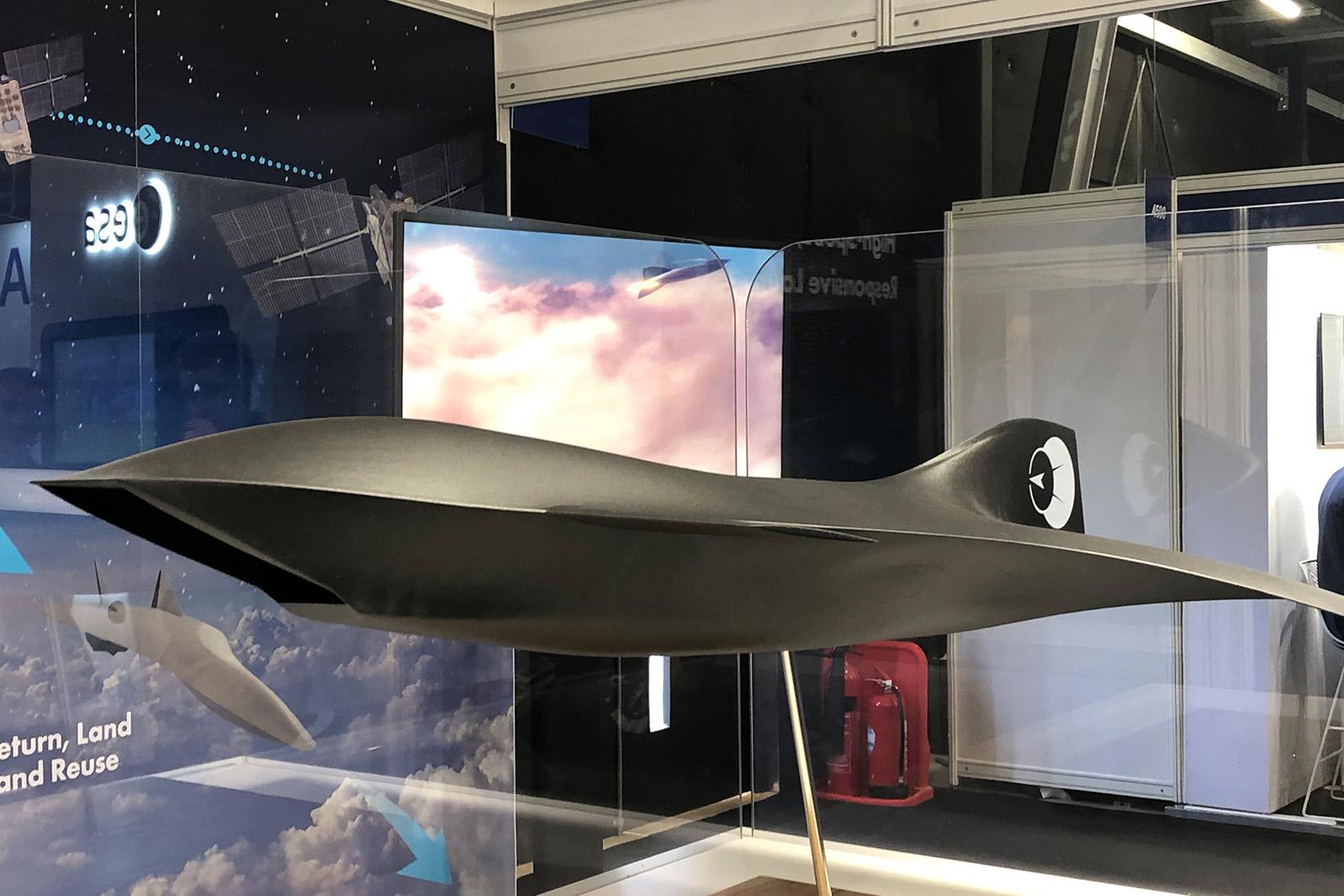
FARNBOROUGH—The Royal Air Force has revealed an ambitious plan to develop technology for reusable Mach 5-plus vehicles for the 2030s under the Hypersonic Air Vehicle Experimental (HVX) program.
Led by high-speed propulsion system developer Reaction Engines in partnership with Rolls-Royce, the project includes the RAF’s Rapid Capabilities Office (RCO), the UK government’s Defence Science and Technologies Laboratory (DSTL) and is supported by the UK National Security Strategic Investment Fund (NSSIF).
“HVX is Reaction Engines’ first step into the world of hypersonics. The aim is to deliver significant enhancements to UK defense capability through innovative hypersonic systems,” says Reaction CEO Mark Thomas. “That's going to build on Reaction Engines' pioneering technology in high-speed propulsion and will see SABRE-derived technologies now migrating into the hypersonic domain.” SABRE is the company’s novel Synergetic Air Breathing Rocket Engine concept.
“We're planning to rapidly mature those technologies and facilitate the development of reusable hypersonic systems to cover a myriad of operational use cases–uncrewed–and an extremely vital capability, particularly for the UK,” Thomas says. “It's going to be done rapidly and It's all about pace. We’ve set off at a high pace and we expect to maintain that throughout this demonstration phase.”
The project builds on an earlier initiative announced in 2019 by the UK Defense Ministry, which provided £10 million ($12 million) of funding to research and develop hypersonic propulsion systems for increased aircraft performance and capability–namely studies of an EJ200 Eurofighter Typhoon engine configured with a Reaction Engines precooler.
“This stems from 2019, when we said we are doing some studies on hypersonics,” says Air Vice Marshal Linc Taylor, RAF chief of staff for air capability. “This is the detail of what we have been doing. So in the last three years it hasn't been quite—we've been doing an awful lot of work with this team. We now realize that there’s probably value in that so let's go a stage further in partnership to understand those technologies more.”
Although specifics of the propulsion concept are not revealed Thomas says the new propulsion system “blends our heat exchanger technology with Rolls-Royce’s gas turbine expertise. It is very related to the work we set off to do in 2018-19 and is a natural evolution to something that is ultra-low cost and very rapid in terms of development and demonstration.”
The proposed baseline combined-cycle engine is expected to consist of a gas turbine core integrated with the Reaction precooler system. The turbine will be used to propel the vehicle from a standing start on the runway to a mode transition speed–likely in the Mach 3 range–upon which the engine will be cocooned and thrust provided by a ramjet/ramburner. Reaction is believed to be exploring the potential use of the turbine and precooler, even after isolating it, to provide thermal control and power for on-board systems and weapons.
Cold (ambient) flow tests of the integrated heat exchanger and an unidentified donor gas turbine is already underway. “That will evolve through this year to the point where we can go to a hot [rig] test and ultimately to a flight test,” Thomas says.
Although Mach 5 speeds and above are targeted, Taylor says “that doesn't need to be achieved in one go of course. If I gold plate everything it will take 20 years to get there. But we also need to understand the value of whichever Mach number we choose, whether it is 6, 8 or 10—whatever we look to achieve. We need to understand why we are going for that based on evidence and this is what this gives you. What we do want to prove is that sweet spot of ultra-low cost with hypersonic reusable technologies."
The vision full-scale demonstrator and potentially initial operational vehicle is thought to be targeted at around 9 m (30 ft.) long with a 4-m (13-ft.) wingspan. A model of the concept was unveiled at Farnborough.
